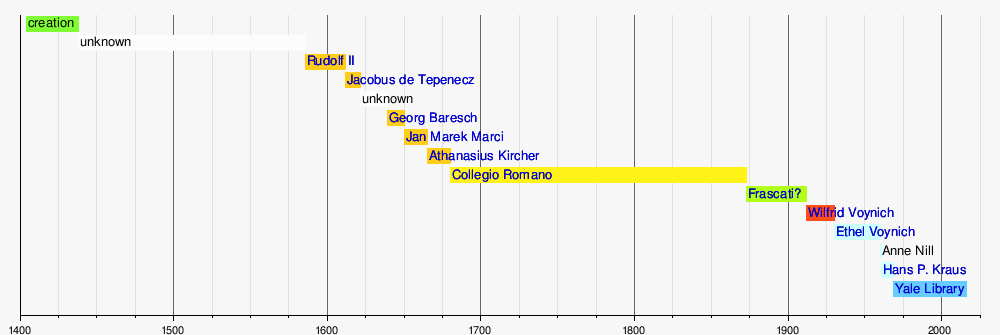

(It’s related to Turkish, Mongolian, and Kazakh.) This would explain the Voynich’s lack of typical Indo-European language features.

– Cuman, unlike almost every language spoken in Europe, is non-Indo-European. If nobody’s thought of Cuman before, there are surely many other less-known languages that haven’t been looked at either. It seems like a strong indicator that this class of theories is under-explored. Cuman is, by the standards of lost languages, quite well-understood it has a Wikipedia page, substantial surviving literature, and it’s very clearly related to modern languages like Kazakh. To the best of my and Nick Pelling’s knowledge, no one has ever proposed this theory, which seems shocking considering the sheer extent of Voynich hypotheses ( this long page just lists some of the more popular ones). My own best guess is that the Voynich is written in the Cuman language. This paper summarizes some of this evidence, and concludes from machine learning analysis that the Voynich is most likely an abjad, an alphabet without vowels (like Arabic or Hebrew). The Voynich is very mysterious to us, but probably not mysterious to its writer, who (from handwriting analysis) is known to have written it quickly and fluidly hence, the information asymmetry matches a natural language and does not match a code. On the other hand, since lost languages are unimportant economically, very little is known about many of them what information exists is usually locked up in obscure manuscripts, not available online while a native speaker would obviously know their language well. In 2015, cryptography is vitally important to the world economy hence, we know far more about cryptography (and associated disciplines like steganography) than the ancients did. The third major reason is one of information asymmetry. The second reason is prior probabilities: the number of manuscripts written in languages that now can’t be read (such as Etruscan or Linear A) is pretty large, while the number of manuscripts written entirely in ciphers is very small. Since Zipf’s Law wasn’t discovered until the 20th century, it would have been impossible to deliberately fake. The first major reason is that Voynich writing passes most known statistical tests for natural languages, such as Zipf’s Law. Of course, I haven’t solved the mystery, but I’ve spent a few weeks thinking about it over the last couple of years.Īfter weighing the evidence, it seems extremely likely that the Voynich is simply written in an unknown natural language, rather than a cipher, a code, or more exotic options listed by Wikipedia. So many crazy theories have been proposed that one writer invented the Voynich Bullshit Index to score them. It’s a book from the 15th century, but no one has been able to identify what language it’s written in, or even what alphabet it uses. The authors of that study couldn’t decode any words, but they could at least tell that the pattern of letters followed Zipf’s Law, which holds that the most common word in a language will appear about twice as often as the second most common word and three times as much as the third most common word and so on.The Voynich Manuscript is one of the most famous mysteries in the world. (Or, as one paper published by the American Botanical Council succinctly put it, “Many scholars consider research into the Voynich manuscript to be academic suicide.”) Others think the manuscript is a cipher that just hasn’t been cracked, and theories about the text’s contents and origins abound.Ī 2013 study published in the journal PLOS ONE claimed that “Voynichese” statistically adhered to linguistic rules. But even if the book is genuinely old, some researchers have dismissed the manuscript as a Renaissance-era hoax text, intentionally filled with gibberish.
#Voynich manuscript conspiracy theories full#
As Yale writes in its description of the manuscript, there is one section full of “drawings of miniature female nudes, most with swelled abdomens, immersed or wading in fluids and oddly interacting with interconnecting tubes and capsules.”Ī few years ago, a radiocarbon analysis of the book’s vellum pages proved that it dates back to the 15th century. The elaborate ink drawings depict astrological symbols, figural scenes and plants, including over 100 unidentified botanical species.

Many pages of the puzzling script include equally puzzling illustrations. “It’s a book that has such an aura of mystery that when you see it for the first time it fills you with an emotion that is very hard to describe,” Juan Jose Garcia, the editor of Siloe, told AFP.


 0 kommentar(er)
0 kommentar(er)
